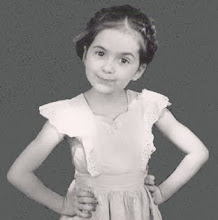Today I’m happy to be interviewing Frank Morrison, the award-winning illustrator of Quacky Baseball. It’s Day 4 of the virtual tour for the book written by Peter Abrahams and just released by HarperCollins. Quacky Baseball is the delightful tale of Thumby Duckling, who is nervous to be up to the plate – he hopes he won’t strike out and let down his team, the Webbies, who are counting on him to save the day. Frank Morrison has taken the delightful characters Peter Abrahams has created and added his own colorful, lively touch. We believe those ducks are playing baseball, with gusto and duck-itude. Booklist cited the “dramatic angles” in his “action-packed paintings.” I love the vividly painted spunky ducks.

A Renaissance man, Frank Morrison has had a life full of creativity. He began drawing at an early age and went on to become a graffiti artist as well as a skillful break dancer, dancing around the world with well-known music personalities. On his website he tells of his ah-ha moment while visiting the Louvre in Paris. And he is now a well-known painter and the illustrator of 16 books for children.
Quacky Baseball is about a rookie player in a duck-y baseball game. You also illustrated Out of the Ballpark, and I just learned you have a book in the works about the Negro League, due out next year. Is it safe to conjecture you are a fan? Did you play the game as a boy?
Yes, I have to confess I am a sports fan. I played T-ball when I was 8. I played high school football. I'm still watching Michael Jordan DVD's.
Tell us about your early experience as a budding artist. I believe as a teenager you channeled your creativity into graffiti art. You then became a very successful dancer. What role did art play in your early life?
Al Hirschfeld said, "An artist never stops drawing." I picked up a pencil at the age of 7 and I never put it down. Even while I was on tour dancing for Sybil and the Sugar Hill Gang, I brought my sketch book along. I would draw the passengers on the trains and planes. I would also compare black books with other writers in different parts of the country and overseas. Graffiti was another way for me to express myself. I found a way to merge the two. At the age of 17, I signed with Essence magazine. Essence published my work for ten years.
You’re a well-known painter whose work is in galleries and private collections. When did you get into children’s book illustration?
I received a call from a publisher in 2003. To work on a book titled Jazzy Miz Mozetta, for which I won the Coretta Scott King award.
No wonder, it's a delightful book! Early on were there any illustrators who inspired you to create books for children?
I have to be honest, back then I did not know any illustrators. The fine art world and illustration world were totally separated. I was like a fish out of water for a while.
How long do you usually have to paint the illustrations for a picture book? What's your preferred medium; your favorite thing about your studio?
It takes me three months to finish a book. I prefer to work in oil. My favorite incentive about my studio is when my children come down to check out what I'm working on.
Do you have a project in the works now?
I'm currently writing my first children’s book.
And finally -- do you still dance?
Yes, I can still get down!
Thanks, Frank! Looking forward to seeing more great illustrations from you and books you've authored, as well.
The Quacky Baseball tour is not over! Visit these sites for more Quacky fun and don’t forget to comment here and on the other sites for a chance to win a signed copy of the book.
Monday, March 28 - Megan Frances Abrahams - On Beyond Words & Pictures - interview with Kristin Daly Rens, Senior Editor, Balzer & Bray
Tuesday, March 29 - Julie Musil - Julie Musil - interview with Thumby Duckling - the main character - via author Peter Abrahams
Wednesday, March 30 - Corey Schwartz - Thing 1 and Thing 2 - author Peter Abrahams on the genesis of Quacky Baseball
Friday, April 1 - Hilde Garcia - The Pen and Ink Blog - interview with author Peter Abrahams
Saturday, April 2 - Lori Walker - L.H. Walker - book review/synopsis with input from Lori's children




































